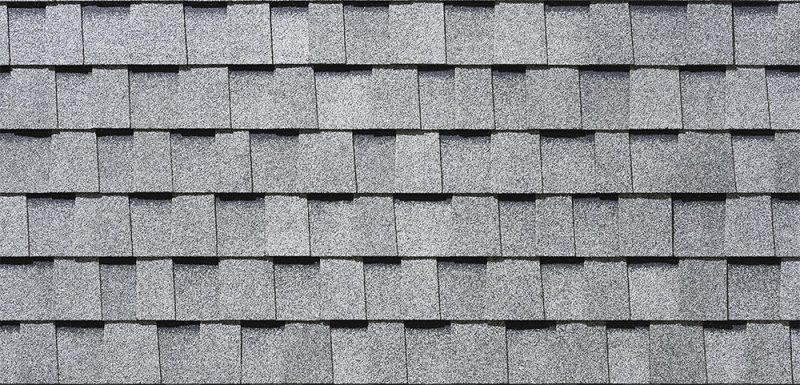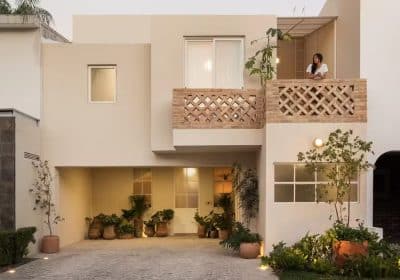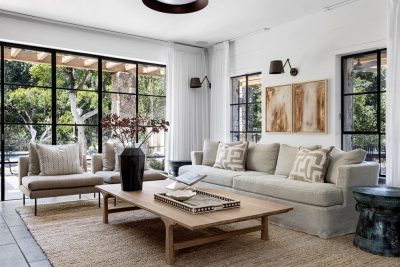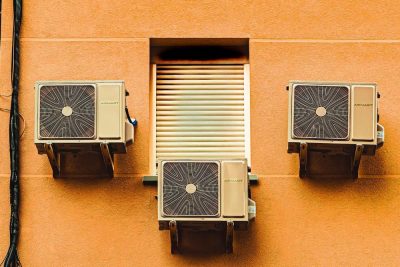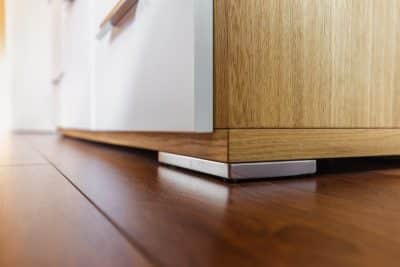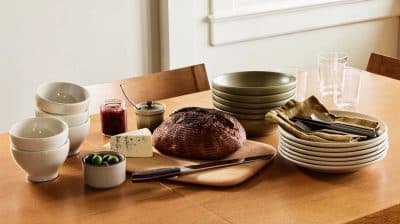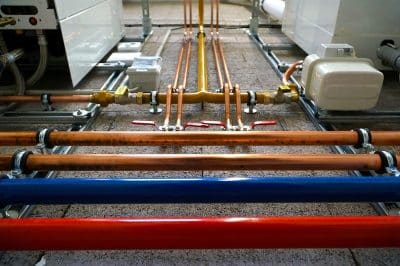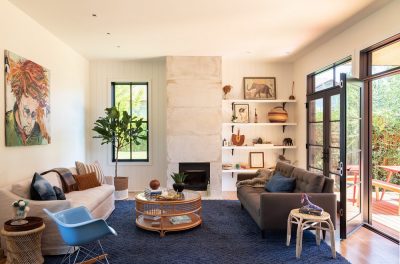The roof of your house is a fundamental structural element, serving as the primary shield against the elements. This includes protection from the sun, rain, wind, hail, and invasive debris, as well as pests and animals. The importance of selecting the right roof shingles cannot be overstated, as the choice impacts not just the durability and cost-effectiveness of your roofing, but also its environmental footprint. In this comprehensive guide, we will delve into the various types of roof shingles available, helping you make an informed decision based on durability, affordability, and eco-friendliness.
1. Asphalt Shingles
It is one of the most popular roof shingles. Asphalt shingles are a predominant choice in residential roofing, appealing broadly due to their balance between cost, performance, and aesthetic versatility. They consist of a fiberglass mat, top-coated with asphalt and mineral granules, which together provide a durable and effective protective layer. Here’s a closer look at the different types of asphalt shingles and their specific benefits:
1.1 3-Tab Shingles
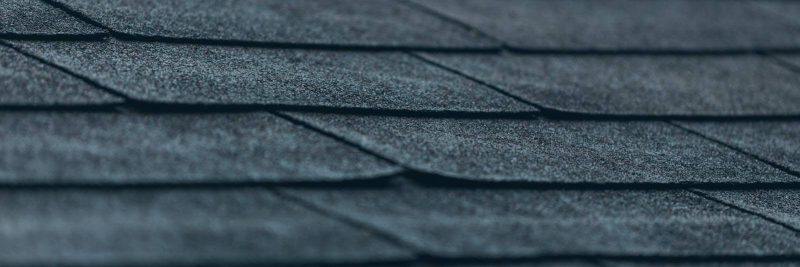
Profile: 3-Tab shingles have a uniform, flat appearance, giving them a sleek and clean look. Each shingle strip is designed to look like three separate pieces when installed, which simplifies the overall installation process.
Cost: They are the most affordable asphalt shingle option, making them an excellent choice for budget-conscious homeowners or for short-term roofing solutions in mild climates.
Durability: While generally durable, they are thinner than other types and may be more susceptible to wind uplift and weather damage.
Aesthetic Options: Limited compared to more premium types, but still available in a variety of colors to match many home exteriors.
Lifespan: Typically, they last about 20 years, depending on environmental conditions.
1.2 Architectural Shingles
Profile: Also referred to as dimensional or laminated shingles, architectural shingles are characterized by their varied thickness and depth, creating a contoured, more dimensional look on the roof.
Cost: These shingles are moderately priced, generally costing more than 3-tab but less than luxury options. The cost is offset by their aesthetic appeal and longer lifespan.
Durability: They are heavier and thicker than 3-tab shingles, which makes them more resistant to wind and weather damage. Many architectural shingles are rated to resist winds up to 130 mph.
Aesthetic Options: Available in a wide range of colors and styles, some mimic the look of natural wood shakes or slate tiles, enhancing the curb appeal of any home.
Lifespan: They can last 30 years or more, with some premium products covered by a lifetime warranty.
1.3 Luxury Shingles
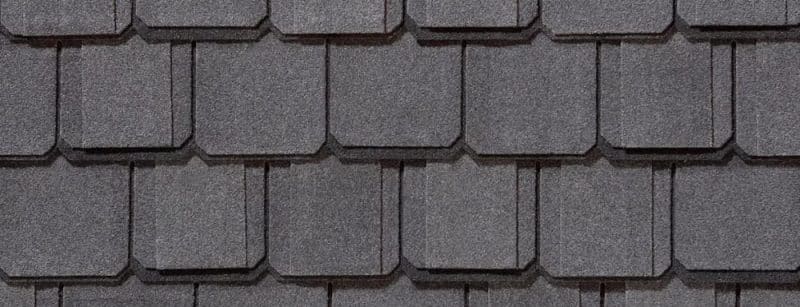
Profile: Luxury shingles are the highest quality of asphalt shingles available. They are designed to mimic high-end materials like slate and cedar shakes, providing a luxurious appearance without the associated cost and maintenance.
Cost: As the premium option, they are more expensive than other asphalt shingles, but they offer significant aesthetic and durability advantages.
Durability: Built to be the thickest asphalt shingles, they offer enhanced impact resistance and longevity. They are an excellent choice in regions susceptible to severe weather conditions, such as hail or heavy snow.
Aesthetic Options: These shingles come in high-definition colors and textures with added shadow lines for a truly upscale, custom look.
Lifespan: Luxury shingles can last up to 50 years with proper maintenance, making them a long-term investment.
When choosing between these types of asphalt shingles, consider factors such as the climate of your area, your home’s architectural style, and how long you plan to stay in your home. For those in high-wind areas, architectural shingles might be preferable due to their enhanced durability. Conversely, for those planning to sell their home soon, 3-tab shingles could be a cost-effective way to improve the home’s exterior without a significant investment. Luxury shingles are ideal for those seeking to elevate their home’s aesthetic and market value while providing outstanding durability and longevity.
2. Metal Shingles
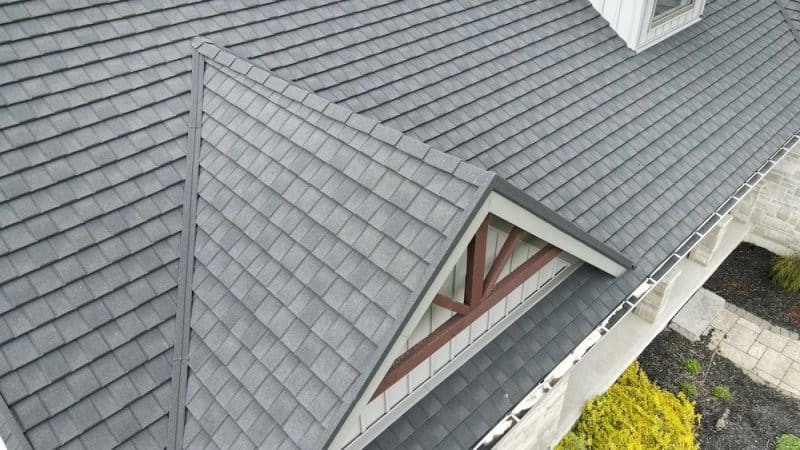
Metal shingles provide a robust and sustainable roofing solution, ideal for homeowners looking for a long-lasting, protective covering for their homes. They are fabricated from various metals, each offering unique benefits:
Materials Used in Metal Shingles:
Steel: Often coated with zinc or a zinc-aluminum alloy to prevent rust, steel shingles are highly durable and recyclable.
Aluminum: Lightweight and resistant to corrosion, aluminum is ideal for coastal areas where salt spray is prevalent.
Copper: Known for its long lifespan and the beautiful patina it develops over time, copper is typically more expensive but offers unmatched durability and style.
Zinc: Extremely durable and resistant to corrosion, zinc is a soft metal that can be easily formed into various shapes, making it suitable for custom designs.
Tin: Once common but now less frequently used, tin shingles are often actually terneplate (steel coated with tin) and offer good resistance to environmental elements.
Durability and Maintenance:
Longevity: Metal shingles are designed to last between 40 to 70 years or more, significantly longer than many other roofing materials. Their lifespan can be extended with proper installation and periodic maintenance.
Weather Resistance: Metal roofs excel in harsh weather conditions. They can withstand high winds, are impervious to rain and snow, and are highly resistant to hail damage.
Fire Resistance: Metal shingles are non-combustible and provide excellent fire resistance, making them a safe choice in fire-prone areas.
Aesthetic and Design Options:
Variety of Styles: Metal shingles are available in a wide range of styles, including those that mimic traditional shingle, tile, and even wood shake designs.
Color Options: Thanks to modern metal coating technologies, metal shingles come in an extensive array of colors that remain vibrant for decades.
Customizable Looks: For those seeking a unique aesthetic, metals like copper and zinc can be crafted into distinctive, custom shapes and designs.
Installation and Acoustic Considerations:
Installation: While the installation of metal shingles can be more complex and costly than some other roofing materials, the long-term savings in maintenance and replacement costs can offset the initial investment.
Sound: Metal roofs can be noisier during rain or hail. However, this can be mitigated with proper underlayment and attic insulation, which can absorb sound and also improve energy efficiency.
Environmental Impact:
Eco-Friendly: Metal shingles are 100% recyclable at the end of their life, contributing to their status as an environmentally friendly roofing option. Additionally, their reflective properties can help reduce cooling costs by deflecting sunlight away from the home.
Cost Efficiency:
Energy Savings: The reflective nature of metal roofs helps keep homes cooler in summer and warmer in winter, reducing heating and cooling costs.
Resale Value: Homes with metal roofs often see a boost in resale value due to the longevity and low maintenance requirements of the roofing.
When considering metal shingles, assess factors such as your local climate, the architectural style of your home, and your budget. In areas with extreme weather, the superior durability and resistance of metal shingles might provide the best protection for your home. Although the initial cost might be higher than some alternatives, the long-term benefits of durability, minimal upkeep, and aesthetic flexibility offer a compelling return on investment.
3. Tile Shingles
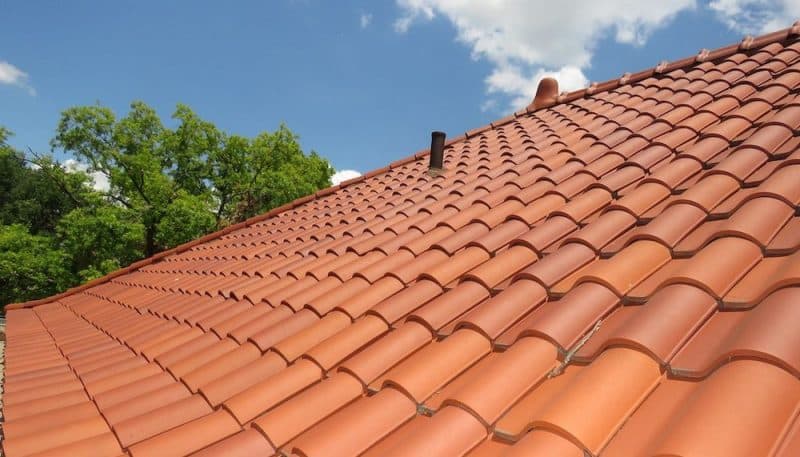
Tile shingles are a premium roofing option that offer a distinctive aesthetic appeal along with remarkable longevity. Here’s a more detailed look at the features, benefits, and considerations of choosing tile shingles for your home:
Materials and Construction:
Clay: Clay tiles are traditional and widely used due to their natural appearance and color longevity. They are made by molding and firing natural clay, often seen in historical and Mediterranean-style architectures.
Terracotta: A type of clay tile, terracotta is known for its rich, reddish-orange color and durability. It offers a classic look that’s especially popular in warmer climates.
Slate: Slate tile shingles are made from natural stone and are known for their strength and color variation. They offer a more natural, earthy appearance and can last for centuries in some cases.
Concrete: Concrete tiles are versatile and economical compared to clay and slate. They can be manufactured to mimic the appearance of other materials, including wood shakes, and are available in a wide range of colors and finishes.
Durability and Maintenance:
Longevity: One of the most significant advantages of tile shingles is their ability to last over 100 years with minimal maintenance. This makes them an excellent long-term investment for any property.
Weather Resistance: Tile shingles are highly resistant to fire, rot, and insect damage. They can withstand harsh weather conditions, including high winds, hail, and heavy rain.
Maintenance Needs: While generally low maintenance, it is important to inspect tile roofs periodically for cracked or broken tiles, especially after severe weather events.
Installation and Structural Considerations:
Weight: Tile shingles are heavier than most other roofing materials. Homes may require additional structural reinforcement before installation to support the weight of a tile roof.
Installation Skill: Proper installation is crucial for tile shingles, as they are brittle and can crack if not handled correctly. Hiring skilled professionals with experience in tile roofing is essential to ensure a long-lasting roof.
Aesthetic Appeal:
Style and Color Options: Tile shingles offer a distinctive architectural look that can significantly enhance the curb appeal of a home. They come in various shapes, such as Spanish, Roman, and flat styles, allowing homeowners to choose a look that complements their home’s design.
Natural Beauty: Materials like slate and terracotta naturally age and change color over time, adding character and uniqueness to the roofing.
Environmental Impact and Energy Efficiency:
Eco-Friendly Materials: Most tile shingles are made from natural materials that are non-toxic and recyclable, making them an environmentally friendly choice.
Energy Efficiency: The heavy mass of tile shingles provides good insulation properties; they help keep the house cooler in the summer and warmer in the winter, potentially reducing energy costs.
Cost Considerations:
Initial Investment: Tile shingles are more expensive initially than many other roofing options due to the cost of materials and installation.
Cost Over Time: Despite the higher upfront cost, the durability and minimal maintenance of tile shingles can make them more cost-effective over the long term, especially when considering their lifespan and the added value to the property.
When considering tile shingles, take into account your home’s structural capability, climate conditions, budget, and aesthetic preferences. While the initial costs are higher, the long-term benefits of durability, minimal maintenance, and enhanced aesthetic appeal make tile shingles a worthy investment for those planning to stay in their homes for many years. They are particularly suited to homeowners seeking a distinctive, classic look with exceptional longevity and resilience.
4. Wood Shingles
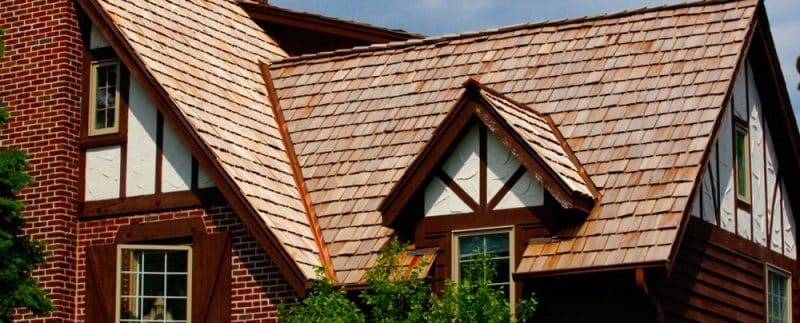
Wood shingles offer a distinctive, rustic charm that complements a variety of architectural styles, from traditional to contemporary. They are celebrated not only for their beauty but also for their environmental benefits and insulation properties. Here’s an expanded view on the use, benefits, and considerations of wood shingles for roofing:
Types and Materials:
Cedar: The most common type of wood used for shingles due to its natural resistance to rot and decay. Cedar shingles can be left untreated to develop a silver-gray patina or can be treated to maintain their original color.
Redwood: Known for its rich color and excellent durability, redwood is another popular choice for wood shingles.
Pine: Generally more cost-effective than cedar or redwood, pine shingles can be a good option but typically require more maintenance and treatment to resist rot and pests.
Durability and Maintenance:
Lifespan: Wood shingles usually last between 20-30 years, but their lifespan can extend up to 50 years with proper maintenance and in favorable climate conditions.
Climate Considerations: Wood shingles are best suited for areas with moderate climates. Extreme humidity can accelerate decay, while very dry environments can increase the risk of fire.
Maintenance Needs: Regular maintenance is crucial for extending the life of wood shingles. This includes cleaning to remove debris, treating to prevent moss and algae growth, and applying sealants to enhance water resistance and prevent cracking.
Installation and Treatment:
Installation: Wood shingles require skilled installation to ensure that they are properly aligned, spaced, and ventilated. This helps prevent moisture buildup, which can lead to rot.
Fire Retardant Treatments: In fire-prone areas, it is advisable to treat wood shingles with fire retardants to reduce flammability. These treatments need to be reapplied periodically to maintain effectiveness.
Pest Prevention: Treatments to repel insects and pests are also recommended, especially in regions prone to termite infestation.
Aesthetic Appeal:
Natural Beauty: Wood shingles naturally blend with the surrounding environment and offer a timeless appeal that other materials can’t replicate. They are available in various shades and cuts, allowing for unique customization.
Aging Process: Wood shingles age and weather over time, which can enhance their aesthetic appeal but may also require more frequent maintenance to manage their appearance and integrity.
Environmental Impact and Energy Efficiency:
Eco-Friendly: Wood is a renewable resource, and shingles are often made from salvaged or sustainably harvested wood, making them an environmentally conscious choice.
Insulation: Wood’s natural insulating properties can help regulate indoor temperatures, reducing the need for heating and cooling and thereby lowering energy costs.
Cost Considerations:
Initial Investment: Wood shingles are generally more expensive than asphalt but less costly than high-end materials like slate or tile. The cost can vary significantly based on the type of wood and the treatment options selected.
Long-Term Value: Despite the higher upfront costs, wood shingles can add significant aesthetic value to a home, potentially increasing its resale value, particularly if well-maintained.
Choosing Wood Shingles
When considering wood shingles, evaluate your home’s exposure to elements, local climate conditions, and your commitment to regular maintenance. Wood shingles are particularly suitable for homeowners seeking a natural, warm appearance with a willingness to invest in ongoing care. Given their natural properties, they offer a unique blend of beauty, insulation, and environmental benefits, making them a compelling choice for the right situations.
5. Synthetic Shingles
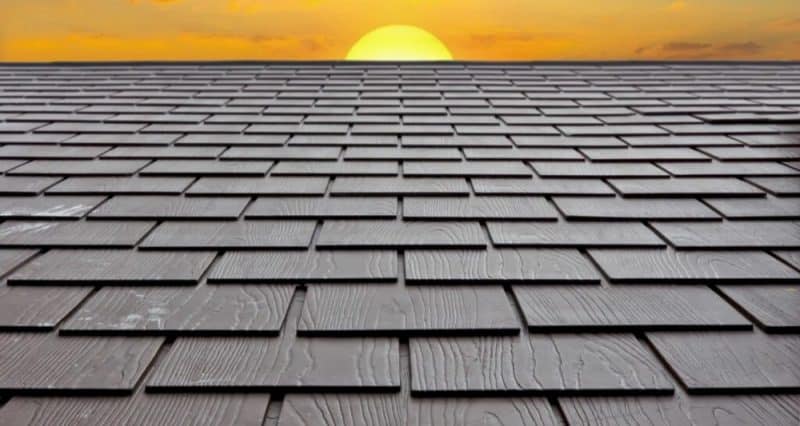
Synthetic or composite shingles are an innovative roofing material that offer a compelling blend of durability, environmental sustainability, and aesthetic flexibility. They are made from a mix of recycled plastics and rubber, making them an eco-friendly option for homeowners conscious about their environmental impact. Here’s a deeper look into the benefits and practical considerations of synthetic shingles:
Composition and Environmental Impact:
Materials: Synthetic shingles are typically manufactured from a combination of recycled plastic, rubber polymers, and sometimes recycled tires. This not only helps in reducing landfill waste but also conserves natural resources.
Sustainability: As they are made from recycled materials, synthetic shingles contribute to the circular economy, promoting the reuse of materials and reducing the environmental footprint associated with roofing.
Durability and Maintenance:
Lifespan: Designed to last between 30 to 50 years, synthetic shingles are extremely durable. They are less prone to cracking, splitting, or warping compared to natural materials.
Weather Resistance: Synthetic shingles are engineered to withstand severe weather conditions, including heavy rain, hail, and strong winds. Their composition makes them resistant to moisture and decay.
Fire Resistance: These shingles are inherently fire resistant, often achieving a Class A fire rating, the highest rating offered for roofing materials.
Maintenance: They require minimal maintenance, typically needing only occasional cleaning to remove dirt and debris, without the need for frequent treatments or repairs.
Installation and Cost:
Installation: Synthetic shingles are lightweight, making them easier and often less costly to install compared to heavier materials like slate or tile. This weight advantage means that they typically do not require additional structural support.
Cost Efficiency: While the initial cost of synthetic shingles can be higher than some traditional materials, their long lifespan and low maintenance requirements make them a cost-effective choice over time.
Aesthetic Options:
Styles and Textures: One of the major advantages of synthetic shingles is their versatility in appearance. They can be manufactured to mimic the look of wood shakes, slate, or even ceramic tiles, complete with authentic-looking textures and variegated colors.
Color Choices: Synthetic shingles come in a wide range of colors and can retain their color fidelity for many years, as the materials used are highly UV-resistant.
Acoustic Properties:
Noise Insulation: Despite their durability, synthetic shingles can also offer good acoustic insulation, reducing the sound of rain and hail compared to harder materials like metal.
Energy Efficiency:
Thermal Performance: Many synthetic shingle products are designed to be energy efficient, reflecting sunlight and reducing heat absorption, which can lead to lower cooling costs in warm climates.
When considering synthetic shingles, think about the long-term investment and the specific needs of your home’s geographic location and climate. They are especially suitable for homeowners looking for a durable, low-maintenance roof that offers the aesthetic flexibility to match their home’s style, all while making an environmentally responsible choice. Synthetic shingles represent a modern solution that addresses both performance and style demands, making them an increasingly popular choice in diverse roofing applications.
Endnote
Choosing the right roofing material involves considering a multitude of factors, including budget, local climate, and personal preferences in style and appearance. While asphalt shingles remain a popular and economical choice, exploring alternative materials like metal, tile, wood, or synthetic options can offer tailored solutions that meet specific needs and preferences. By understanding the strengths and limitations of each type, you can select the most suitable roofing option for your home, ensuring long-term protection and aesthetic appeal. In the process, it’s essential to consider the various types of roof shingles available to find the best fit for your needs.

